August 11, 2021
Going for the Hummingbird Gold!
So now, let’s head to the hummingbird Olympics! We can even watch the games in person if our gardens host fiery nectar torches like Mexican honeysuckle (Justicia spicigera).
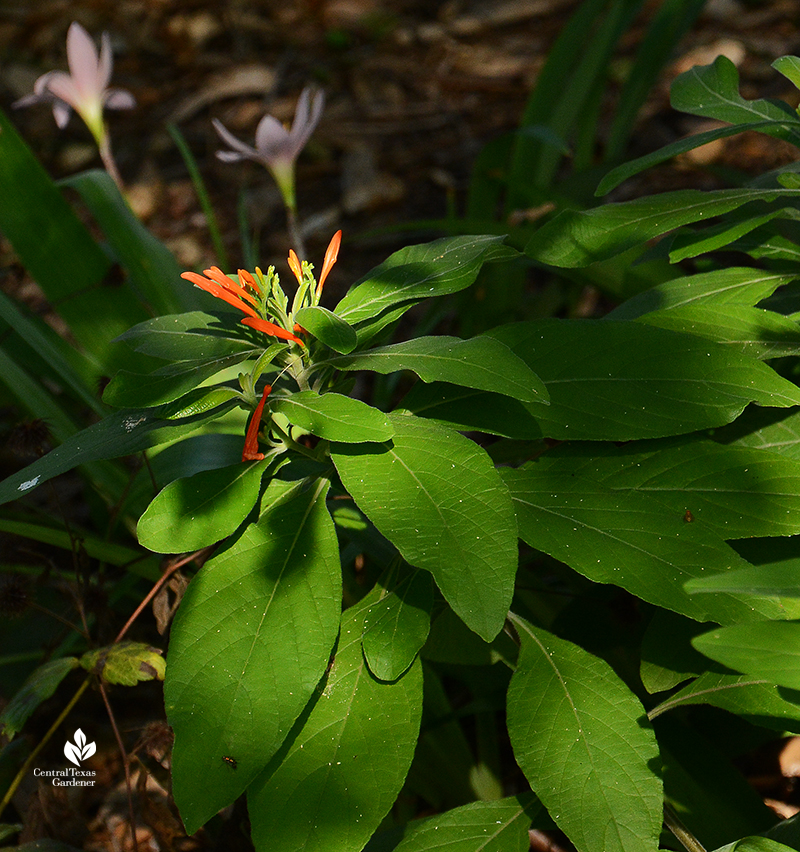
This 2-foot (or so) perennial is not a vine, despite its name. I’ve dotted it around my garden since it’s compatible with part shade and little water. I may never luck into a zooming hummingbird shot, though I’m content to settle for bountiful bees willing to stick around.
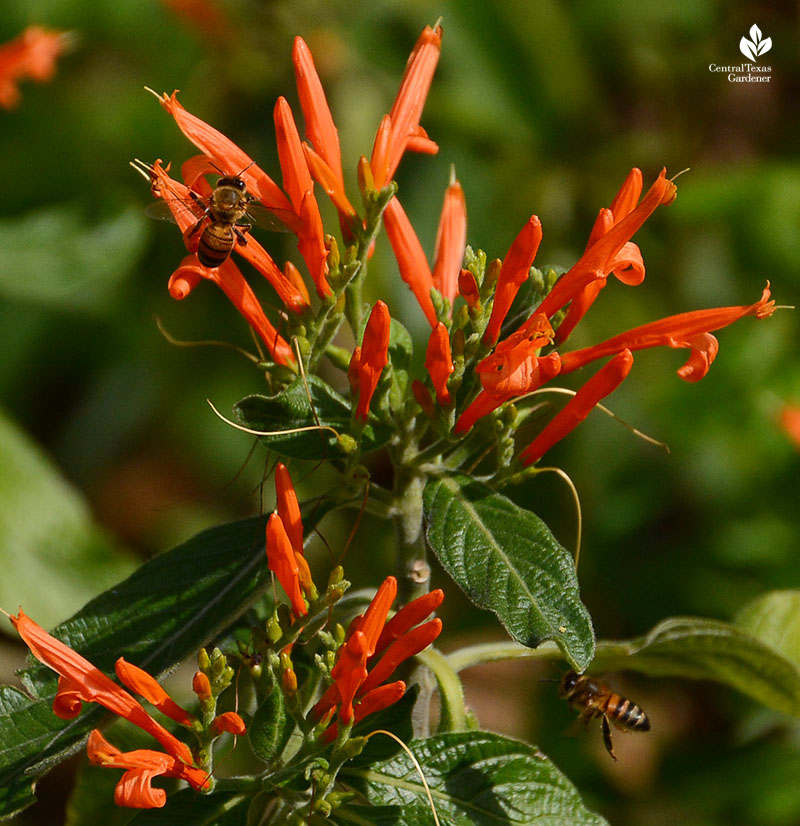
Since mine are long-established, they rallied quickly after February’s extended freeze that dipped to 9°. In warmer winters, they barely freeze back, but they definitely benefit from a good chop in early spring.
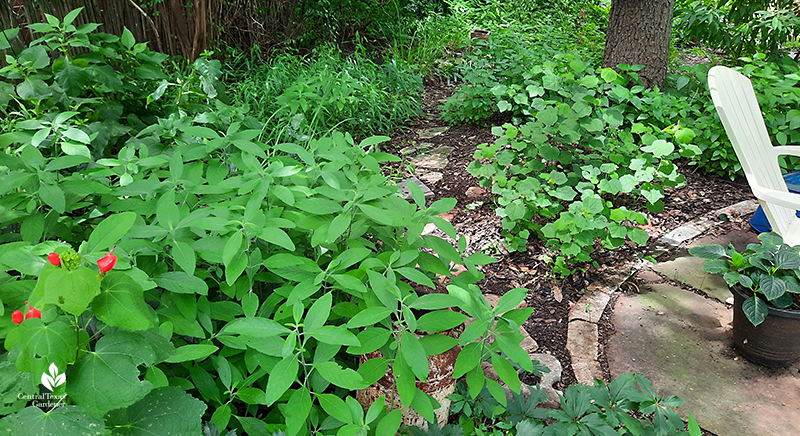
Dicliptera suberecta (isn’t that fun to pronounce?) goes by so many names that I stick with its botanical moniker. Some call it Uruguayan Firecracker plant, since it heralds from Uruguay.
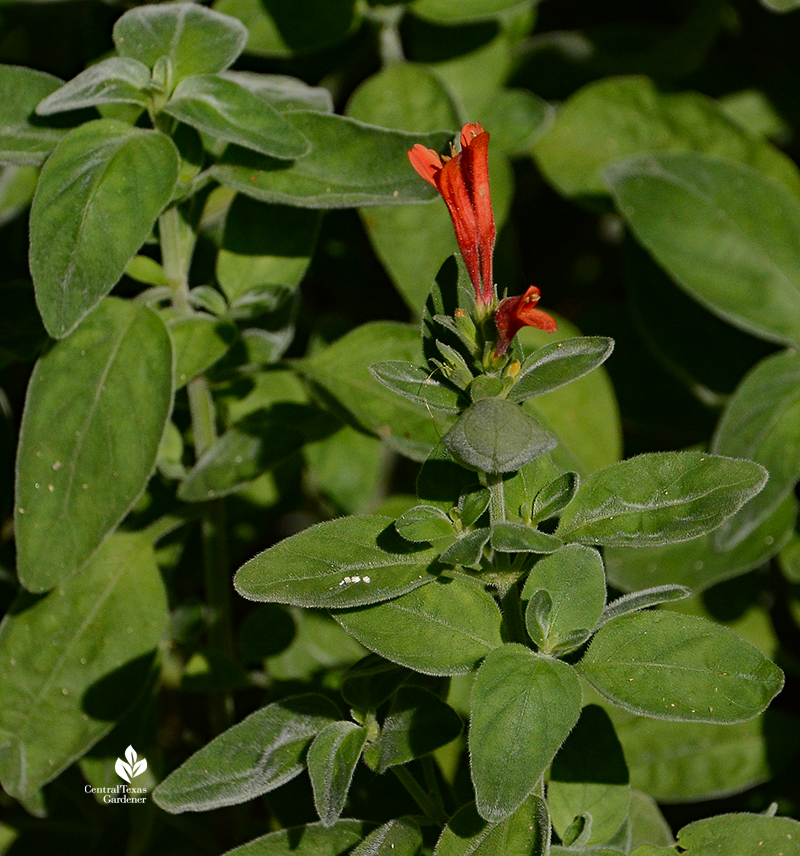
Others refer to it as “hummingbird plant,” which makes sense, because those deep, flame-orange flowers make food runways for hummingbirds and large butterflies. Mine are a little over a foot tall in part shade with sun blasts. Those fuzzy, silvery-tinged leaves bonus up foliar flair. They wilt fast in summer, since I don’t water much, but always rally.
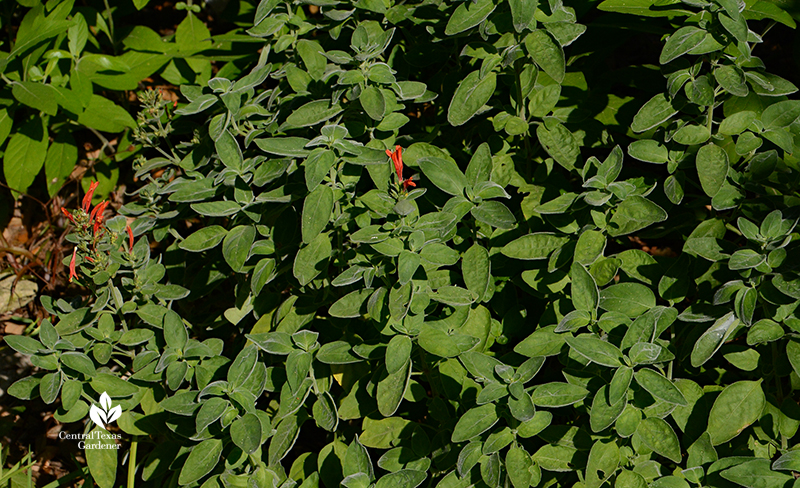
Trellised native crossvine (now fading) and huge orange trumpet vine flowers mingle to soften and cool the side of a brick building at Mueller.
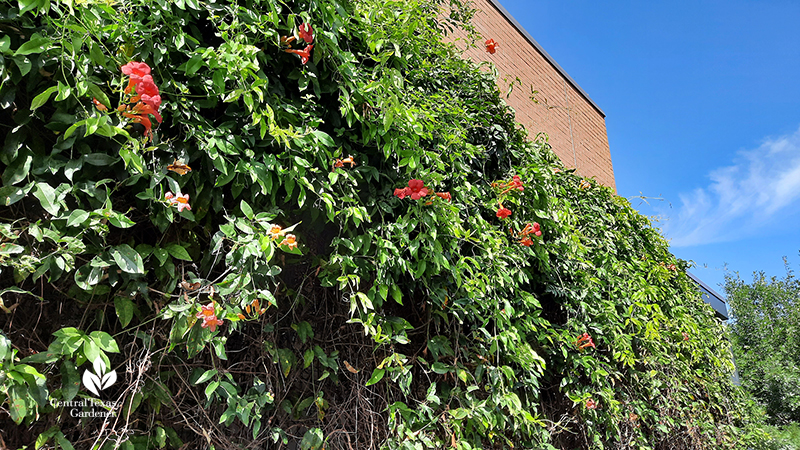
No doubt, hummingbirds zip around patrons on their way to a meal of their own.
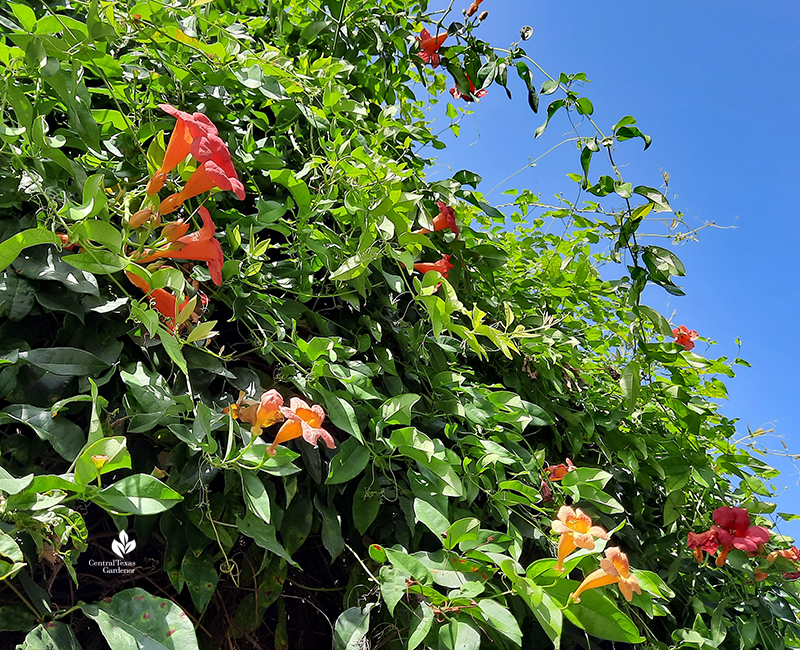
These are vigorous (aggressive?!) vines, so keep that in mind. They do want sun but can take part shade. If you’re not sure which plant you see out and about, trumpet vine’s leaves are toothed. Crossvine leaves are smooth.
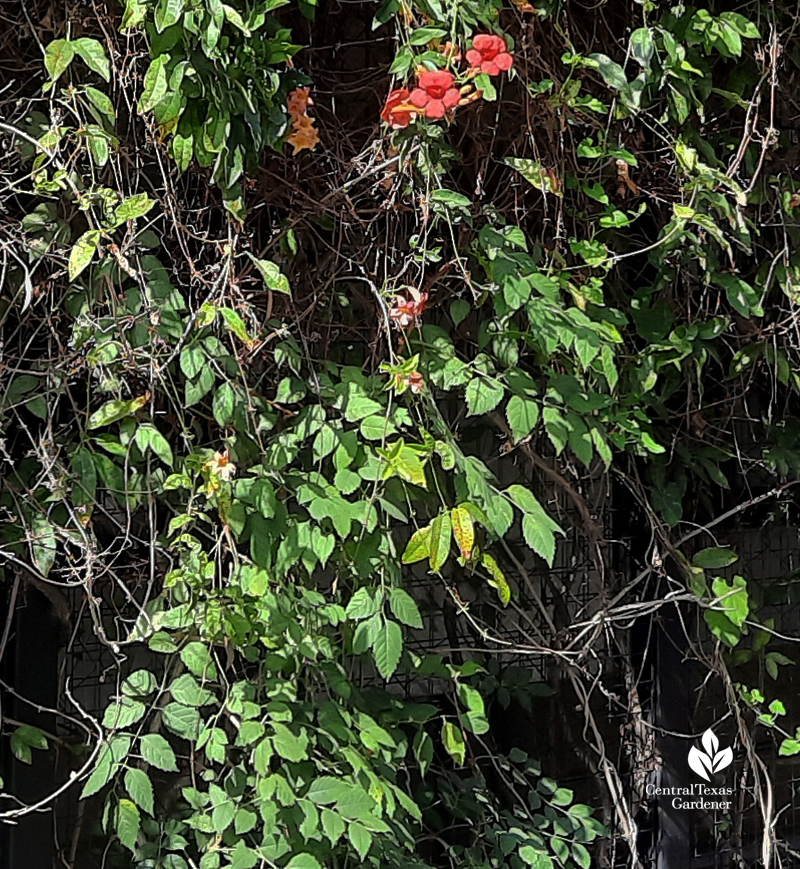
To counterpoint flaming colors with cool pink, my ‘John Fanick’ Phlox paniculata beckons hummingbirds and butterflies in a morning sun bed.
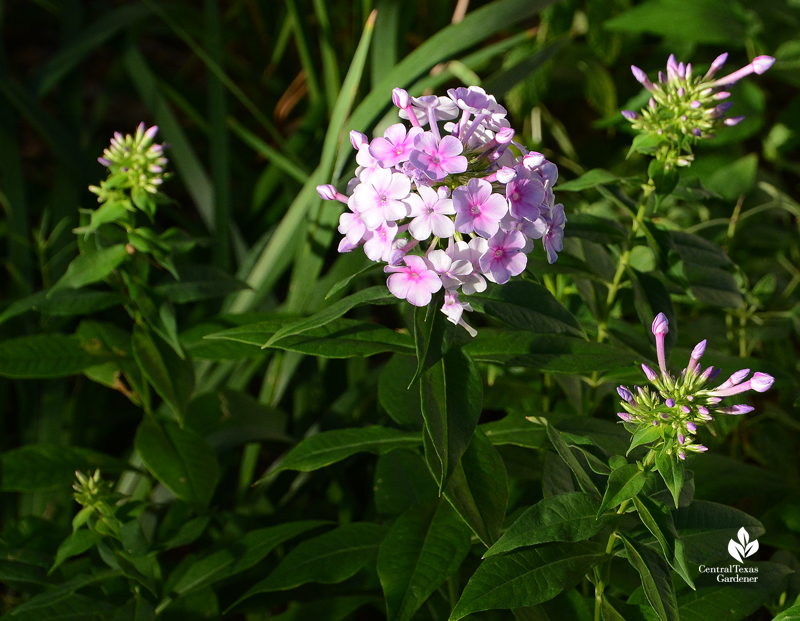
Now fading to white, pink-hued Habranthus robustus rain lilies echo with bee-loved flowers. Rain prompted bloom flushes on evergreen leave spikes near that Mexican honeysuckle.
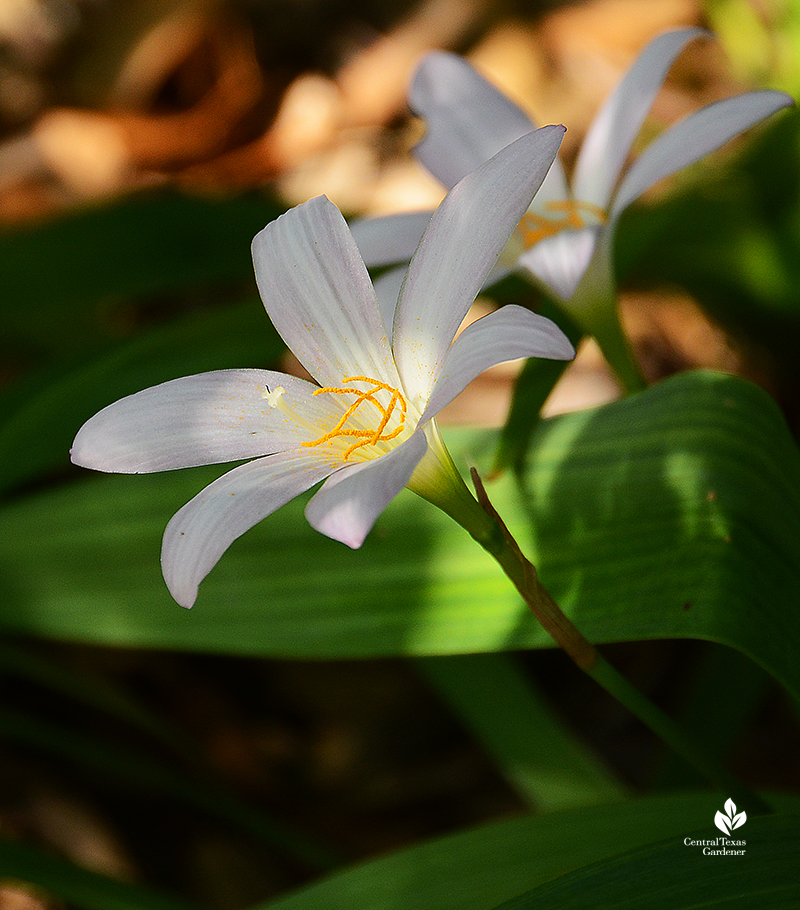
Of course, it’s a mad hummingbird scramble on native Turk’s cap!
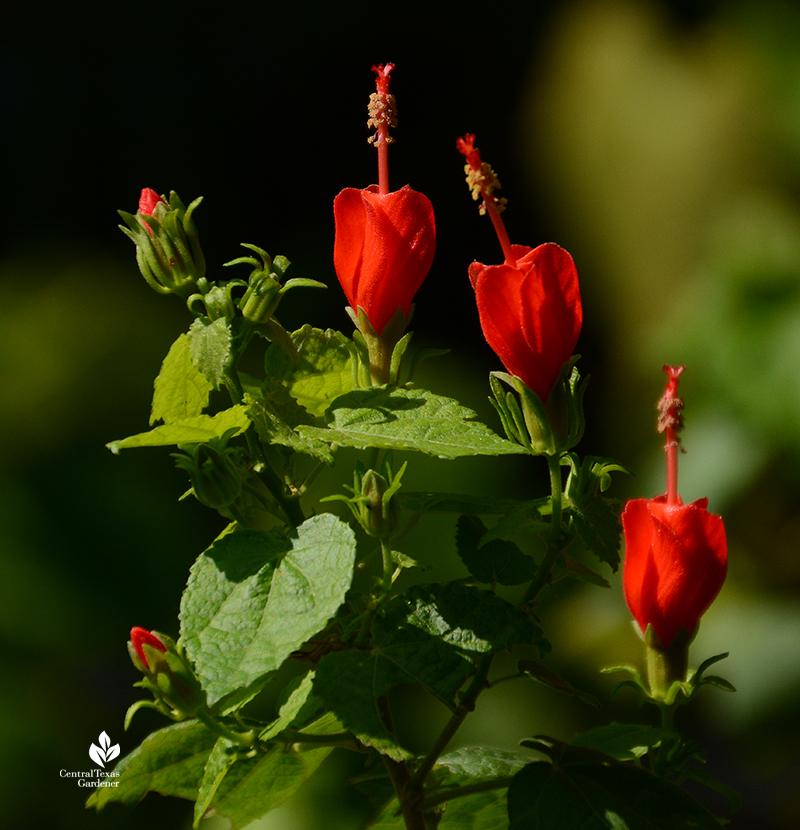
When I take a stretching break, I spot them out the windows on it and flame acanthus.
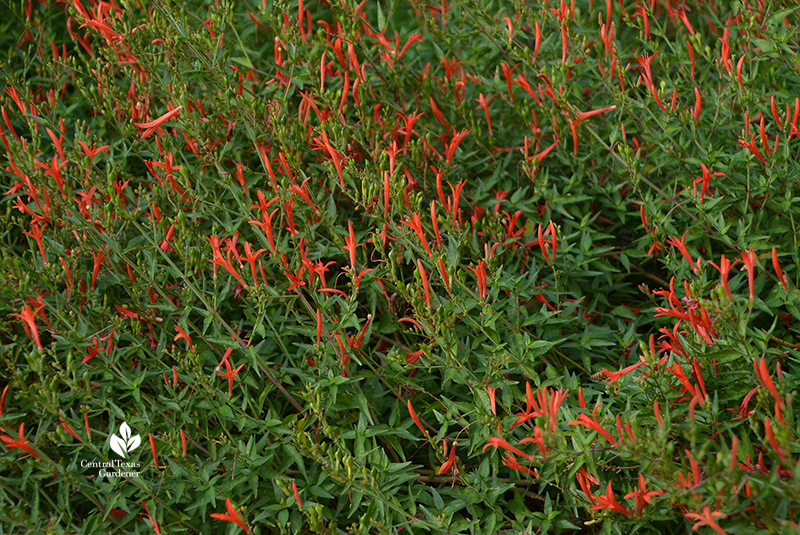
Stop by next week when San Antonio native plant landscape designer Drake White explains how to prune our native plants in mid-August for pollinator bounty this fall!
Check out the Wildflower Center’s list of native plants for hummingbirds.
Here’s more about plants and hummingbird identification.
Feeders supplement nutrition as hummingbirds fuel up for the long flight south. Avoid pre-made red dye liquids. Zap ¼ cup of sugar to 1 cup of water in the microwave (or heat on the stove), stir, cool and fill your feeder. Do replace it every few days and clean out the feeder since mold grows really fast in late August heat!
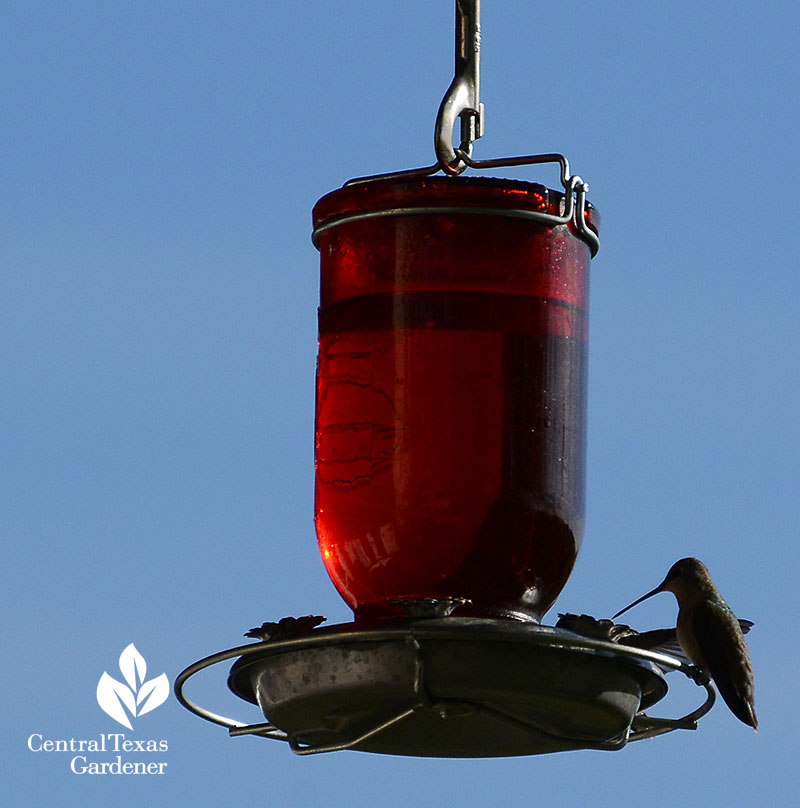
Thanks for stopping by! See you next week, Linda
tags:

